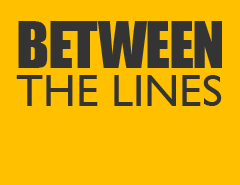Tuesday’s mixed economic data, combined with political uncertainty, causes dollar to experience its worst January for thirty years and gold to rise
There were some surprise data misses published on the economic calendar on Tuesday, starting with prints from Europe’s largest (and the planet’s third/fourth largest) economy, Germany. Retail sales unexpectedly fell, falling by 0.9% in December, with expectations of a 0.6% rise, whilst the annual figure came in -1.10%, versus predictions of a 0.5% annual rise. Unemployment fell to 5.9% in Germany, however, the monthly claimant count spiked by 26k, against expectations of a 5k rise.
In the UK consumer borrowing rose by 1bn, versus the anticipated 1.9bn, whilst mortgage approvals in December also fell back. Both figures could indicate that the UK’s consumers are: tightening their belts, all spent up, not receiving the wage rises necessary to keep up with lifestyle expectations and that the reality of Brexit is beginning to bite.
On a wider European measurement the data published on Tuesday was improved; year on year GDP came in at 1.8% for the Eurozone’s economy, ahead of pollsters predictions, whilst the single currency bloc’s unemployment level fell to 9.6%, down 0.2%.
Turning attention to North America, Canada turned in decent GDP figures; the monthly figure beat predictions and as a consequence year on year GDP has risen to 1.6%, from 1.5% previously, helping the Loonie rise versus the US dollar. In the USA the Chicago purchasing manager index slipped, it’s now flirting with the contraction level, coming in just above 50, at 50.3. Whilst the conference board consumer confidence level came in at 111.3, missing the prediction of 113.
None of the afore mentioned misses can be diagnosed as game changing, but they do indicate that; despite the trillions of asset purchase stimulus and the emergency base rates implemented by their respective central banks, the globe’s two largest economies; America and Europe, are still displaying anaemic symptoms.
Political uncertainty and what’s being translated as chaotic decision making in the USA, has seen the price of gold and it’s appeal as a safe haven asset, rise significantly over recent days. The precious metal is now up by 5.2% in January, the biggest rise since the UK’s June referendum decision. Gold advanced by 1.3% on Tuesday, crashing up through R3, to settle at $1,211 per ounce, towards the end of trading on the Comex in New York. Silver futures rose by up to 2.8% during Tuesday’s trading sessions, to end the day at circa $17.55 an ounce, the highest level seen since Nov. 11th.
Equity markets experienced falls in the USA and Europe; the DJIA appears to have flatly rejected the 20,000 level, closing down 107 points/0.54% at 19,854. The SPX closed down 0.09%. Euro STOXX closed down 0.98%, DAX down 1.25%, CAC down 0.75% and the UK’s FTSE closed down 0.27%.
The headlines are screaming, “the US dollar has experienced its worst January for thirty years”, the context is that: analysts, investors and speculators, are fearing that the new USA administration is busily talking down the dollar, to make it cheaper in order to stimulate exports and reduce imports. The dollar index, which measures the greenback versus a basket of its six major peers, hit its lowest level since Dec. 8th at 99.430 and is set to decline about 2.6% for the month, its biggest decline since March 2016 and its worst trading start to a year since 1987. USD/JPY plunged by circa 1.5% after the comments from Trump, reaching its lowest point since Nov. 30th, finishing the day at circa 112.80 yen. EUR/USD gained more than 1% versus the dollar to $1.079, its highest level since Dec. 8th.
Economic calendar events for February 1st 2017, all times quoted are London times.
09:30, currency effected GBP. Markit UK PMI Manufacturing SA (JAN). Manufacturing in the UK has enjoyed a modest rebound since the referendum induced a fall in sterling’s value, the anticipation is that the PMI will come in at 55.9, from a previous reading of 56.1. Analysts and investors will be looking for any evidence that manufacturing has stalled, now the inflated import prices, due to the plunge in sterling, have potentially infected manufacturers’ buying prices and process.
15:00, currency effected USD. ISM Manufacturing (JAN). The ISM report is highly respected by analysts and ranks higher than Markit’s manufacturing survey in the USA. The prediction is for a modest rise to 55, from 54.7 previously.
15:00, currency effected USD. Construction Spending (MoM) (DEC). The prediction is for a fall in construction spending to 0.3%, from 0.9% previously.
19:00, currency effected USD. Federal Open Market Committee Rate Decision. It would take a brave analyst to predict a rate rise on Wednesday from the current 0.75% level, given the incumbent president has been in the Whitehouse less then a fortnight. The FOMC appeared to issue forward guidance in December that three rate rises would be forthcoming in 2017, but January could be too early to implement their plan. Analysts and investors will, however, pay careful attention to the narrative accompanying the key decisions made by the committee.

